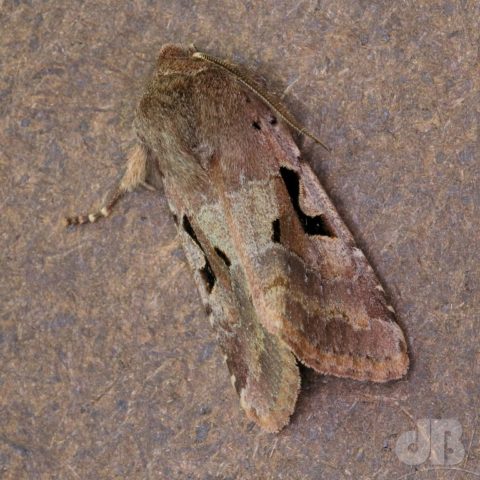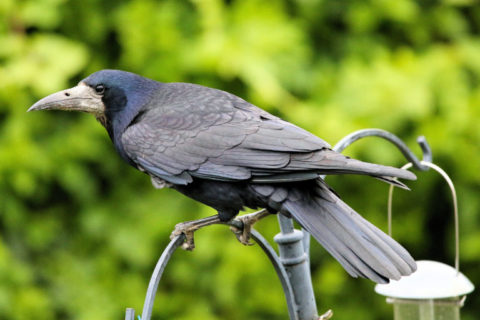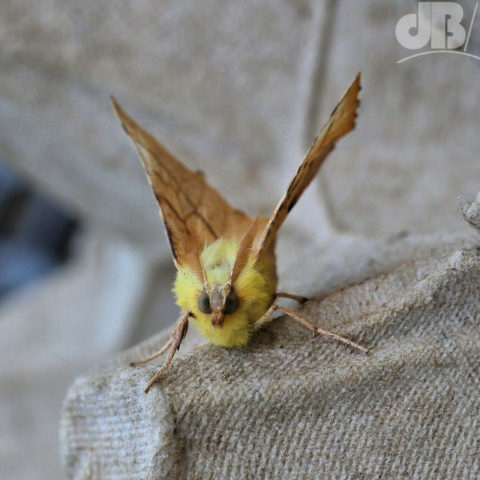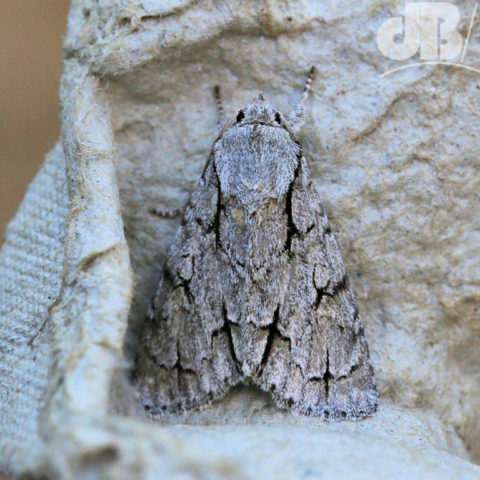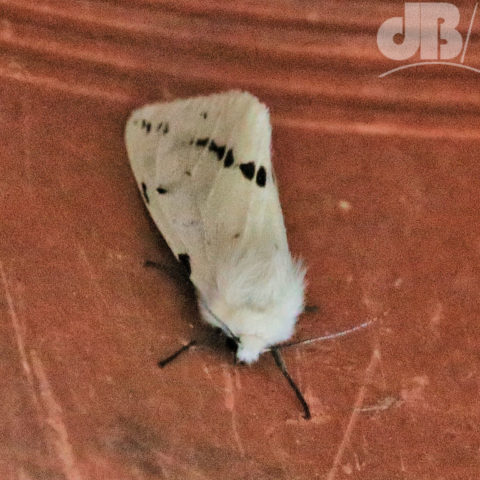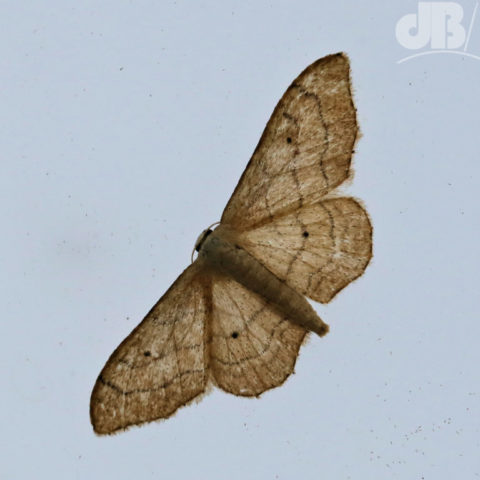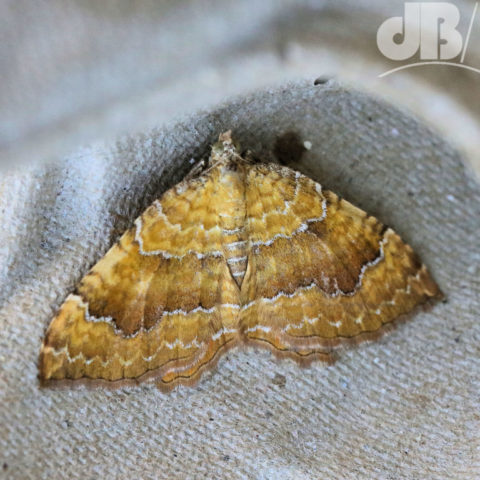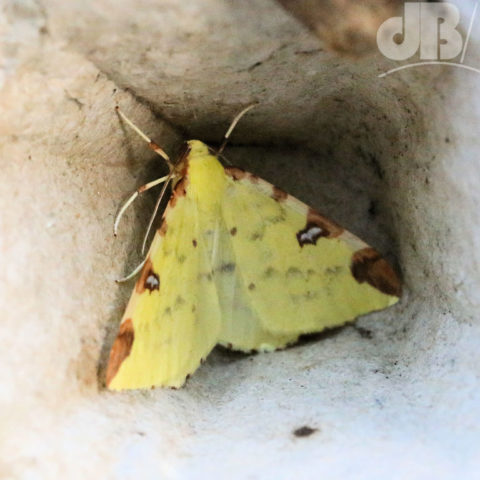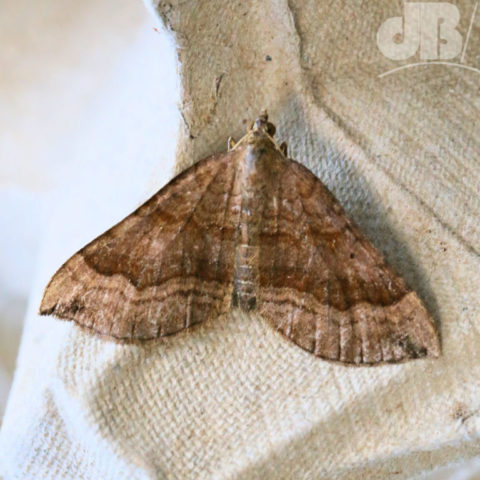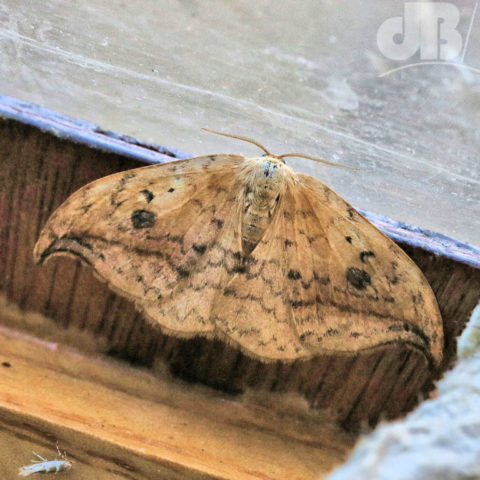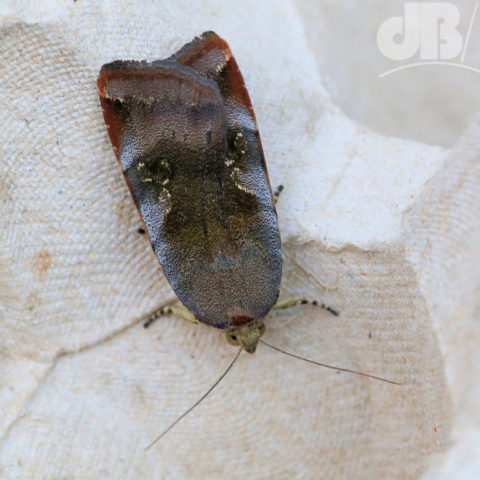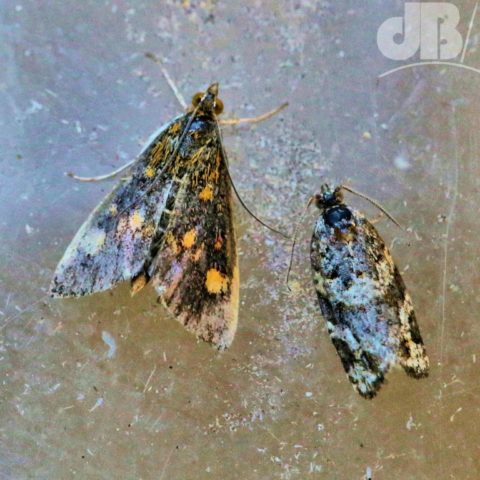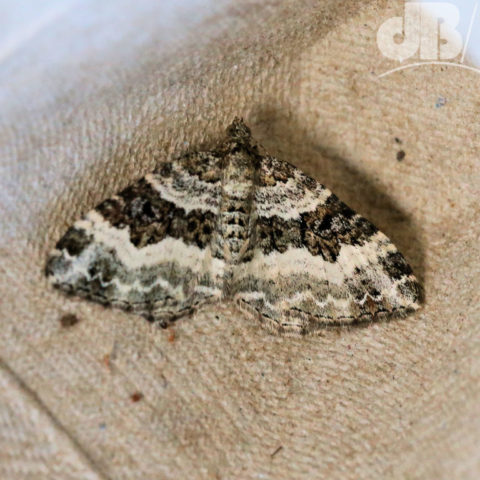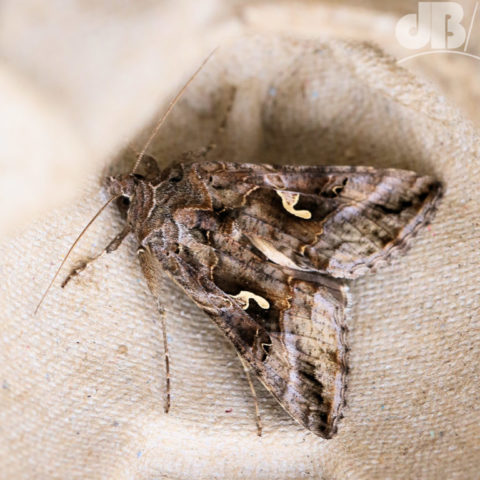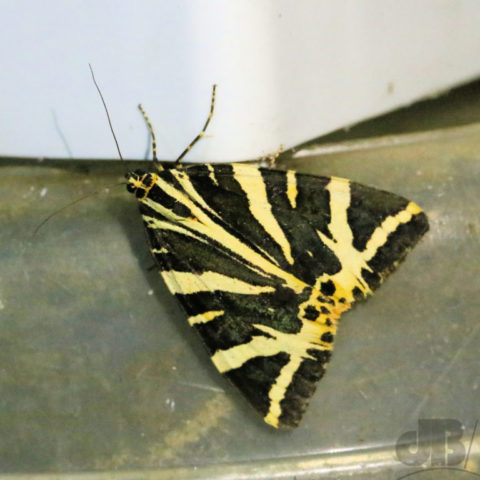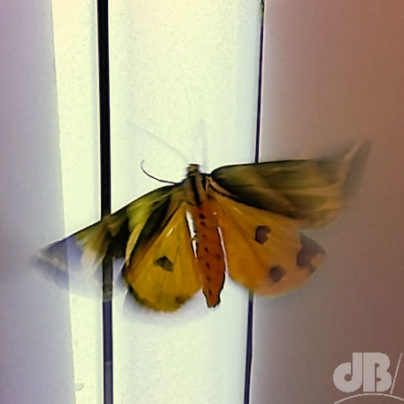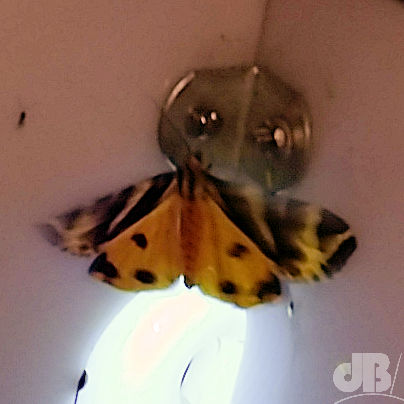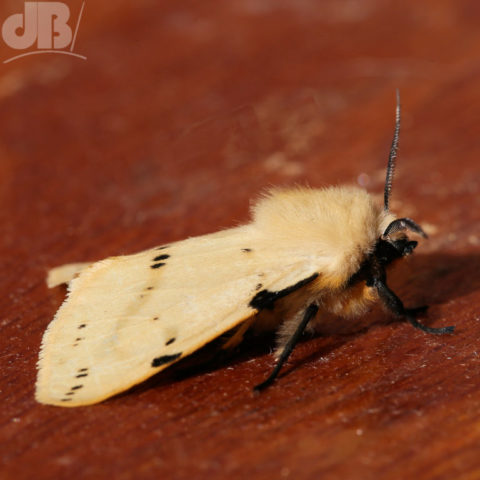I think the name of this moth, Angle Shades, would make a great name for a progressive rock band, their first album would, of course, be Phlogophora meticulosa. The species gets its common name from its characteristic forewing markings. The base colour is buff, brown towards the edge of the wing most distant from the body, the termen.
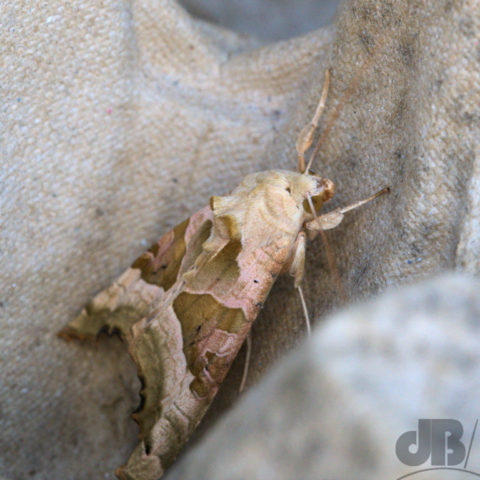
Angle Shades is marked with a bold V-shaped pink and green marking. Overall, the colouration and angular markings create a disruptive camouflage. To my eye seeing this moth for the first time in the trap on the morning of 2018-08-06 it looked very much like a small autumnal leaf, at least it did until I donned my reading glasses.
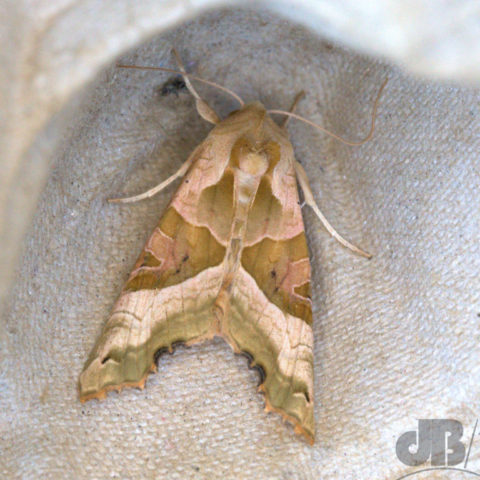
Angle Shades is a member of the Noctuidae, also known as the owlet moths. It is found across Europe all the way to the Ural Mountains, but is also seen in The Azores, Algeria, and in Asia Minor, Armenia, and Syria. It is a strongly migratory.
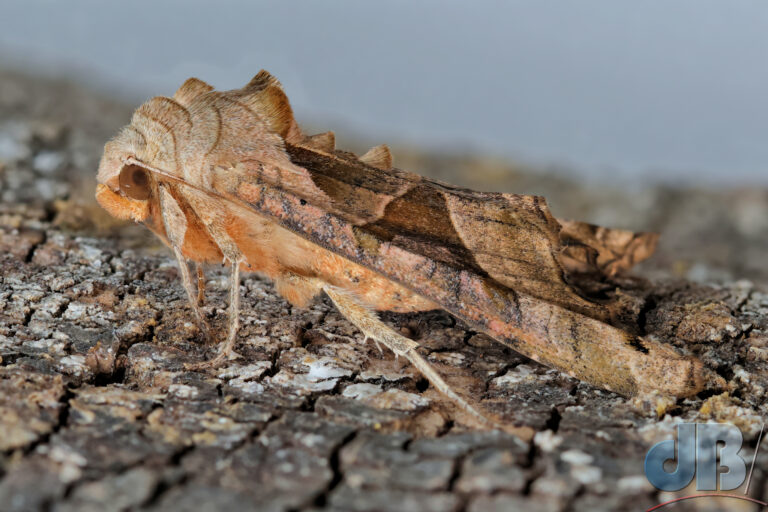
And, speaking of which my friend Bea Perks once wrote about the Silver Y (Autographa gamma) and the fact that to be able to migrate, this moth, and presumably many others, have to fly at an altitude of about 1 kilometre otherwise they don’t survive long enough to reach their destinations.
This is the Silver Y:
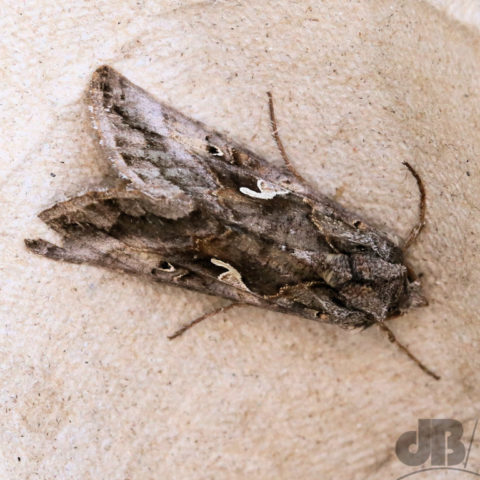
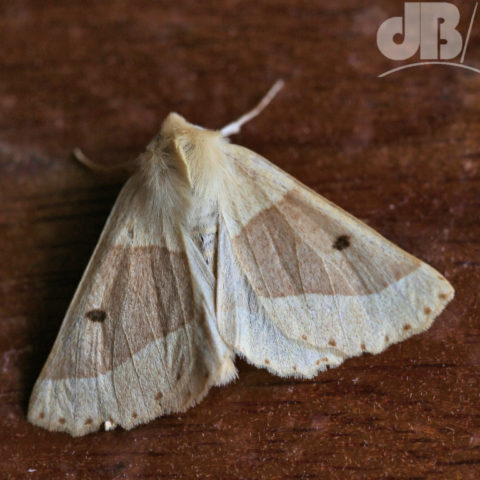
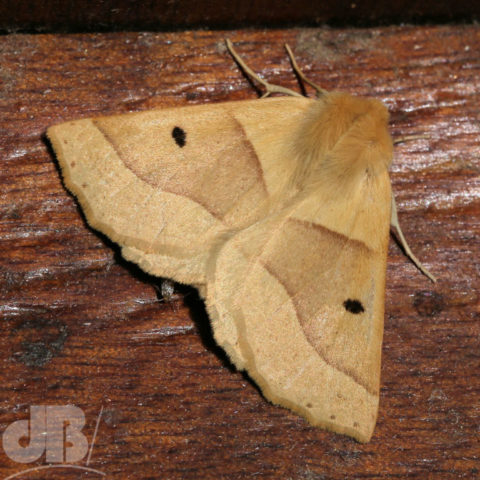
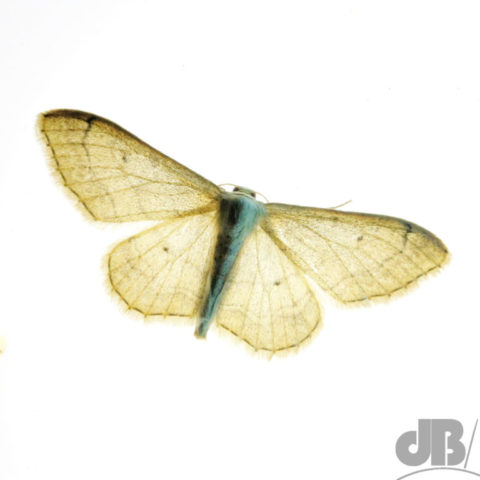
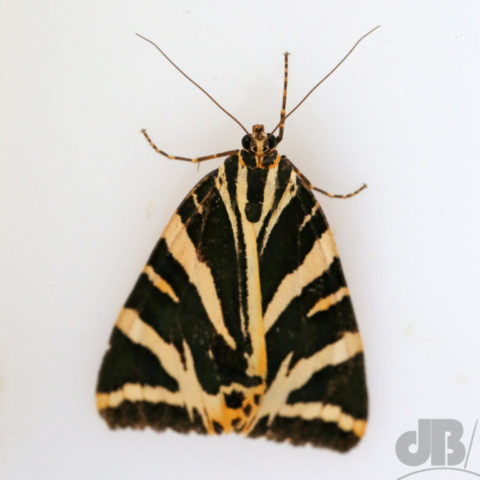
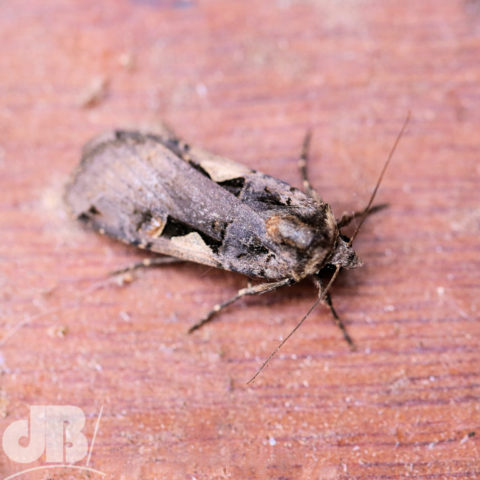
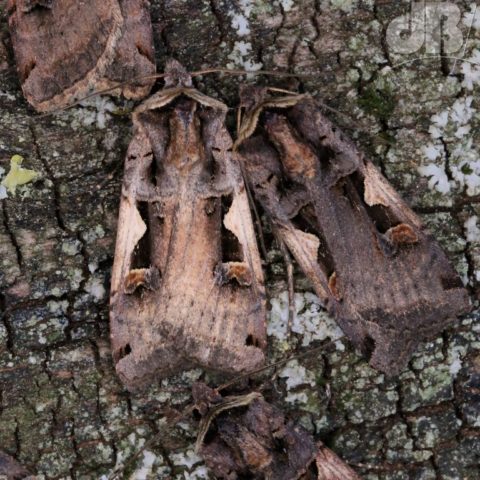
 Not to be confused with a second moth in the Noctuidae, the Hebrew Character, Orthosia gothica, that also bears a Hebrew nun on each forewing, although the two species are not particularly closely related despite appearances. It’s interesting to note (per Matthew Oates in his book In Pursuit of Butterflies) that The Setaceous Hebrew Character was the nickname of lepidopterist, entomologist, birdwatcher, and chemist Baron Charles de Worms (1904-1980), a balding and eccentric character of Austrian-Jewish heritage who worked at Porton Down and was a cancer specialist.
Not to be confused with a second moth in the Noctuidae, the Hebrew Character, Orthosia gothica, that also bears a Hebrew nun on each forewing, although the two species are not particularly closely related despite appearances. It’s interesting to note (per Matthew Oates in his book In Pursuit of Butterflies) that The Setaceous Hebrew Character was the nickname of lepidopterist, entomologist, birdwatcher, and chemist Baron Charles de Worms (1904-1980), a balding and eccentric character of Austrian-Jewish heritage who worked at Porton Down and was a cancer specialist.